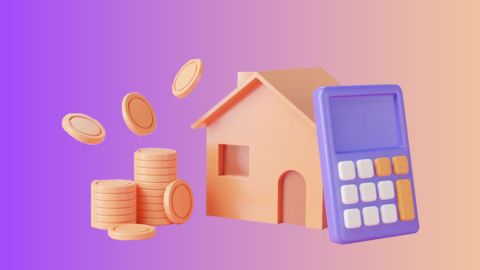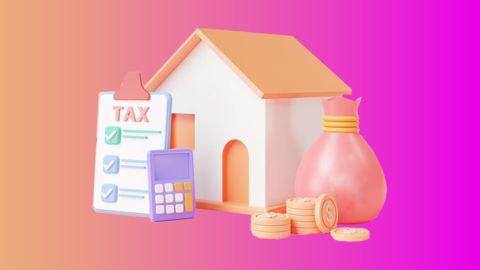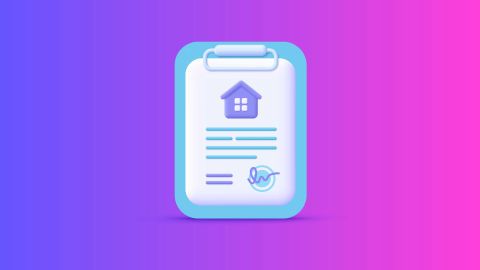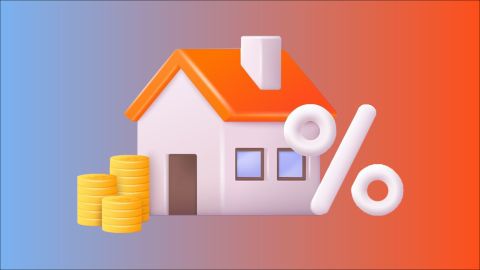When it comes to managing your finances, exploring tax-saving instruments is crucial. In India, you have access to various tax-saving instruments to optimise your financial planning and reduce your tax liabilities. Some popular options include investments in Public Provident Fund (PPF), Equity Linked Savings Schemes (ELSS), insurance plans, Life Insurance policies (LIC), National Savings Certificate (NSC), tax-saving fixed deposits, and contributions to the Employee Provident Fund (EPF). Additionally, you can benefit from deductions available under Section 80C of the Income Tax Act, which covers expenses such as life insurance premiums, and tuition fees.
Moreover, if you own a home, you can leverage it as a tax-saving instrument. Home loans offer tax benefits under various sections of the Income Tax Act. For instance, the principal amount repaid towards the home loan is eligible for deduction under Section 80C, while the interest paid qualifies for deduction under Section 24(b). By strategically utilising home loans, you can not only fulfil your housing needs but also enjoy substantial tax savings.
How HRA benefits work on payment of house rent
House Rent Allowance (HRA) is a component of the salary package offered by employers to their employees. It is specifically designed to cover the cost of rented accommodation. The amount of HRA received varies depending on factors such as the city of residence and the company's policies. To avail of the HRA benefit, employees must pay rent for the accommodation they reside in. The portion of HRA not utilised for rent payment is taxable, while the remaining amount is exempt from tax, subject to certain conditions.
Factors influencing HRA calculation
Several factors influence the calculation of HRA, including your salary, the actual rent paid, and the city of residence. The Income Tax Act provides specific rules and conditions for determining the amount of HRA that can be claimed as a deduction. These factors play a crucial role in determining the eligibility for HRA benefits and the extent to which they can be claimed. Using an income tax calculator can help you accurately determine your HRA benefits based on these factors.
Home loan implications on HRA benefits
The presence of a home loan can impact the HRA benefits available to an individual. If you own a house but reside in a rented accommodation, you can claim HRA benefits for the rent paid. However, if you occupy your own house, HRA benefits cannot be claimed. In such cases, you can avail of tax benefits on the repayment of home loan interest under Section 24(b) of the Income Tax Act.
HRA claim calculation methods and examples
Calculating HRA involves several methods, each with its own set of conditions and considerations. The commonly used methods include:
- Actual HRA received: This method involves calculating the actual amount of HRA received from the employer. The least of the following amounts are considered for deduction: actual HRA received 50% of salary for those residing in metro cities or 40% for non-metro cities, and the excess of rent paid over 10% of salary.
- Rent paid minus 10% of salary: Under this method, the difference between the rent paid and 10% of the salary is considered for HRA deduction. The least of the following amounts are deductible: rent paid minus 10% of salary, actual HRA received, or 50% of salary for metro cities and 40% for non-metro cities.
- 50% of salary: In this method, 50% of the individual's salary is considered for HRA deduction, provided they reside in metro cities. For non-metro cities, the percentage is reduced to 40%.
Let us illustrate these methods with an example:
Suppose Mr. A resides in Mumbai and receives a monthly salary of Rs. 60,000. His actual HRA is Rs. 25,000, and he pays rent of Rs. 20,000 per month. Using the calculation methods:
- Actual HRA received: Rs. 25,000
- Rent paid minus 10% of salary: Rs. (20,000 - 10% of Rs. 60,000) = Rs. 14,000
- 50% of salary: 50% of Rs. 60,000 = Rs. 30,000
- In this case, the least of the three amounts will be considered for HRA deduction.
Leveraging home loans for tax savings
Unlock the potential of home loans as a cornerstone of your tax-saving strategy. Beyond facilitating homeownership, home loans offer substantial tax advantages. If you have an ongoing home loan, you can leverage it to avail tax benefits. Principal repayments qualify for deductions under Section 80C, while interest payments are eligible for deductions under Section 24(b) of the Income Tax Act.
By strategically utilising home loans, you not only fulfil your housing aspirations but also maximise tax benefits, ensuring a financially sound future. With careful planning, home loans become more than just a means to acquire property; they become a powerful tool for building wealth and securing your financial well-being.
Avail of a home loan from Bajaj Housing Finance
If you are in pursuit of your dream home and require financial assistance, consider availing of a home loan from Bajaj Housing Finance. With Bajaj Housing Finance, you can access funds tailored to suit your specific housing needs, making your homeownership journey seamless and hassle-free.
Furthermore, if you already have an existing home loan and are seeking better terms and benefits, transferring it to Bajaj Finance could be a prudent move. Bajaj Housing Finance provides seamless loan transfers, allowing you to enjoy enhanced benefits such as quick disbursal, lower interest rates, and extended repayment tenure.
Apply for a home loan today.




